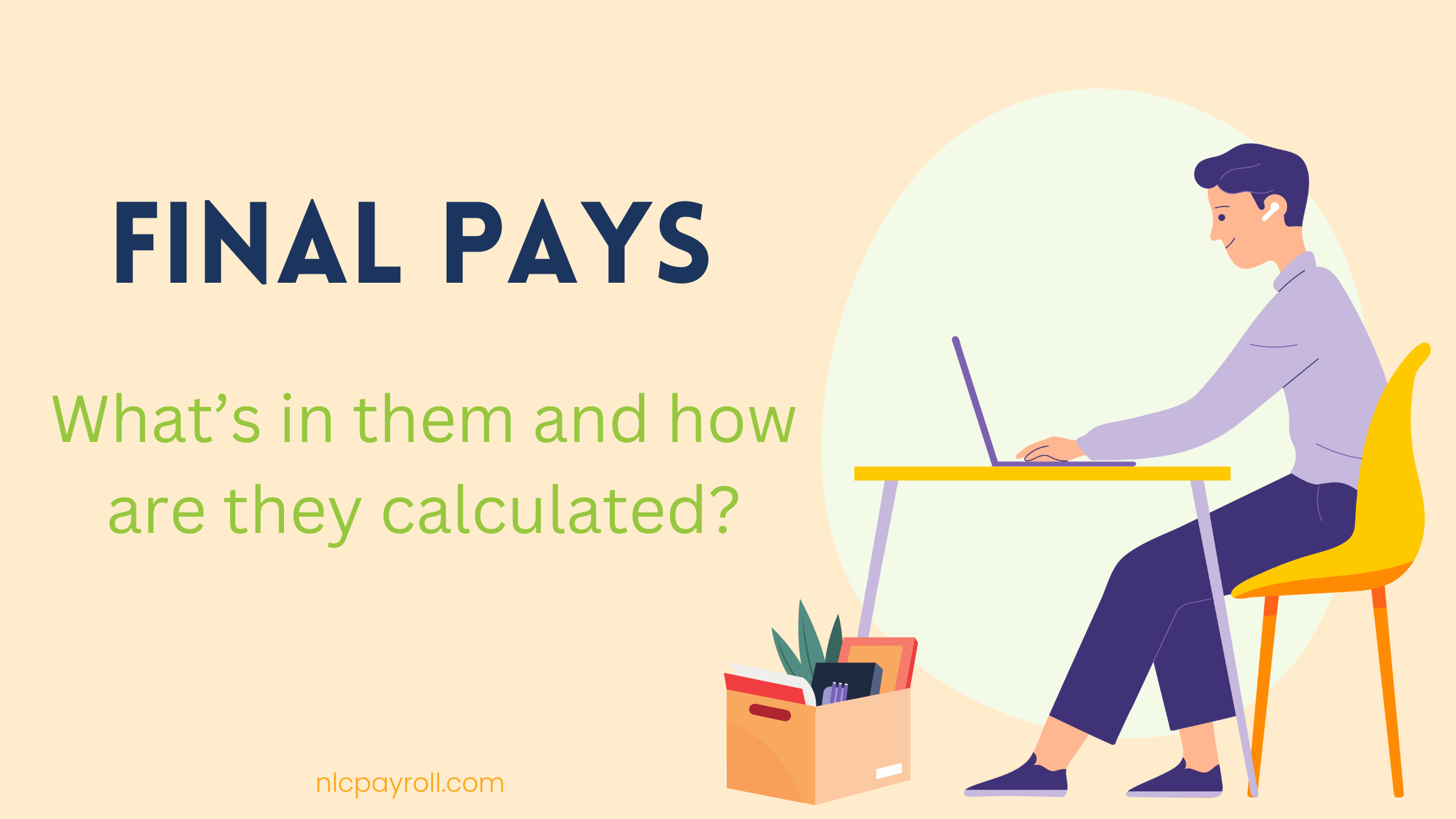
An employee has worked their notice period and now it’s time to process their final pay. Their last pay includes their final wages, but what else are they entitled to? Lets unpack this!
The final pay must be paid on or before the pay day of the final pay period – this might be after the employee’s last day of work. This pay must include pay for all hours worked since the last pay until the end of employment, for all annual leave, public holidays and alternative holidays owed and any additional payments owing.
Notice period
If an employee has given the correct amount of notice, as per their employment agreement, the employer must pay them to the end of the notice period.
An employee can ask not to work out their full notice period if the employer agrees to this or if their employment agreement states the employee can be paid instead of working their notice period.
If the employee gives their employer less notice than stated in their employment agreement, the employer only needs to pay for the days the employee actually worked.
Leave balances
If an employee leaves their job before they were entitled to annual leave, the employee will get a payment of 8% of their gross earnings (anything they have earned during their employment, including any other payments in their final pay), less any amount they have already been paid for annual leave taken in advance or annual leave on a pay as you go basis.
This is the same for an employee who has entitled annual leave, except they must also be paid for any remaining annual leave they are entitled to. This is paid at whichever rate is higher of ordinary weekly pay or average weekly earnings (we dive into this over here) as well as 8% of their gross earnings earnt since their last entitlement, less any amount they have already been paid for annual leave taken in advance.
Alternative holidays
If an employee is owed an alternative holiday, this must be paid at the relevant daily pay or average daily pay (learn about that here) for their last day of work – regardless of the rate of pay they were on at the time they earned the alternative holiday.
Holiday payments
Sometimes an employee can be entitled to be paid for public holidays that fall after their last day of work.
When a final pay is being processed, an employee is entitled to any public holidays that fall between their last date of employment and the amount of outstanding annual leave (not accrued) they have. For example if an employee ended employment 3 days before Matariki and had one week of annual leave which would take them past that date, they are due to be paid the full value of the annual leave and also a public holiday.
Unused sick or bereavement leave balance
There is no legal requirement for an employer to pay out any unused sick or bereavement leave in an employee’s final pay. An employer can choose to do this or it could be written into an employee’s employment agreement.
ACC
If an employee has been on ACC leave and they leave their job after time off on ACC, the employer must pay any outstanding annual holidays in their final pay based on the higher of
- their average weekly earnings for the 12 months before their end date, or
- their ordinary weekly pay.
If the employee hasn’t been paid in over a year, their average weekly pay will be zero so the employer must use the employees ordinary weekly pay to calculate this.
Parental leave
If an employee isn’t returning to work after their parental leave, their last day of work was the day before they started their parental leave so all annual leave entitlements are as at this updated date.
If an employee worked some ‘keeping in touch’ hours while on parental leave but are not returning to work, their gross earnings for calculating their annual leave payments in their final pay does not include their ‘keeping in touch’ payments.
We get it, processing an employee’s final pay can get pretty complicated! We handle the complexity so you don’t have to, get in touch today.
Get in touch
Disclaimer: The information provided in this article is for general informational purposes only and is not intended as a substitute for professional advice. Reliance on the information in this article is at your own risk, and it should not be used as a basis for making decisions without consulting a qualified professional.
